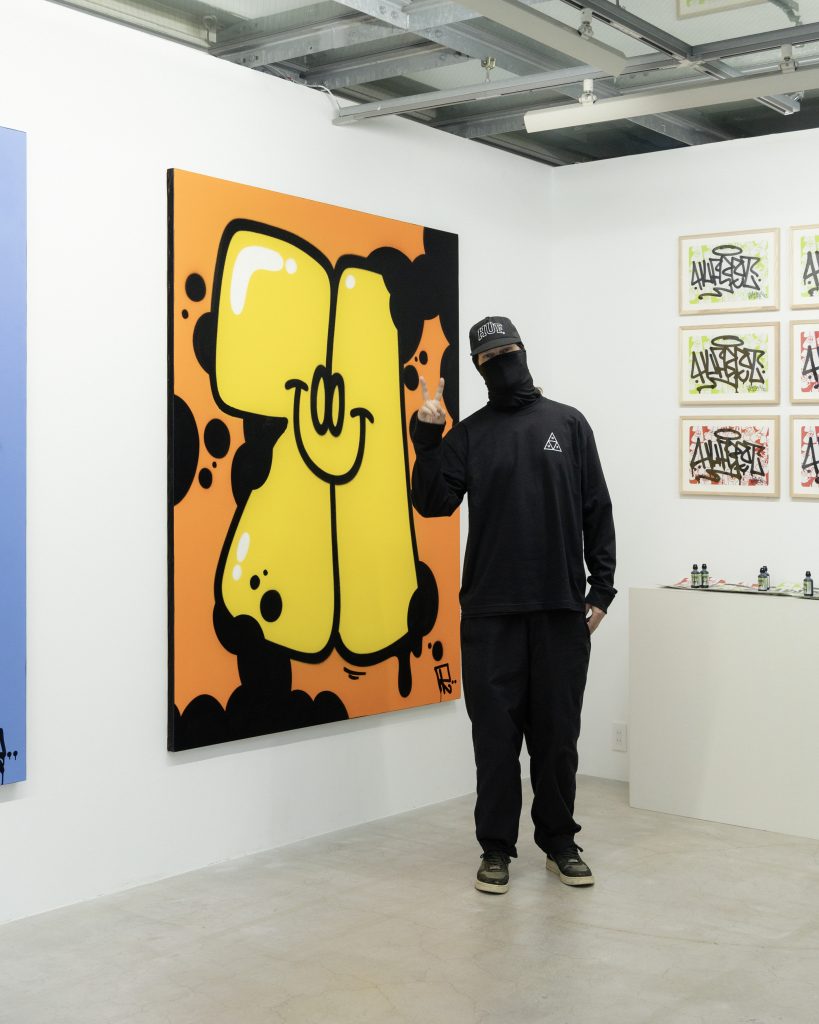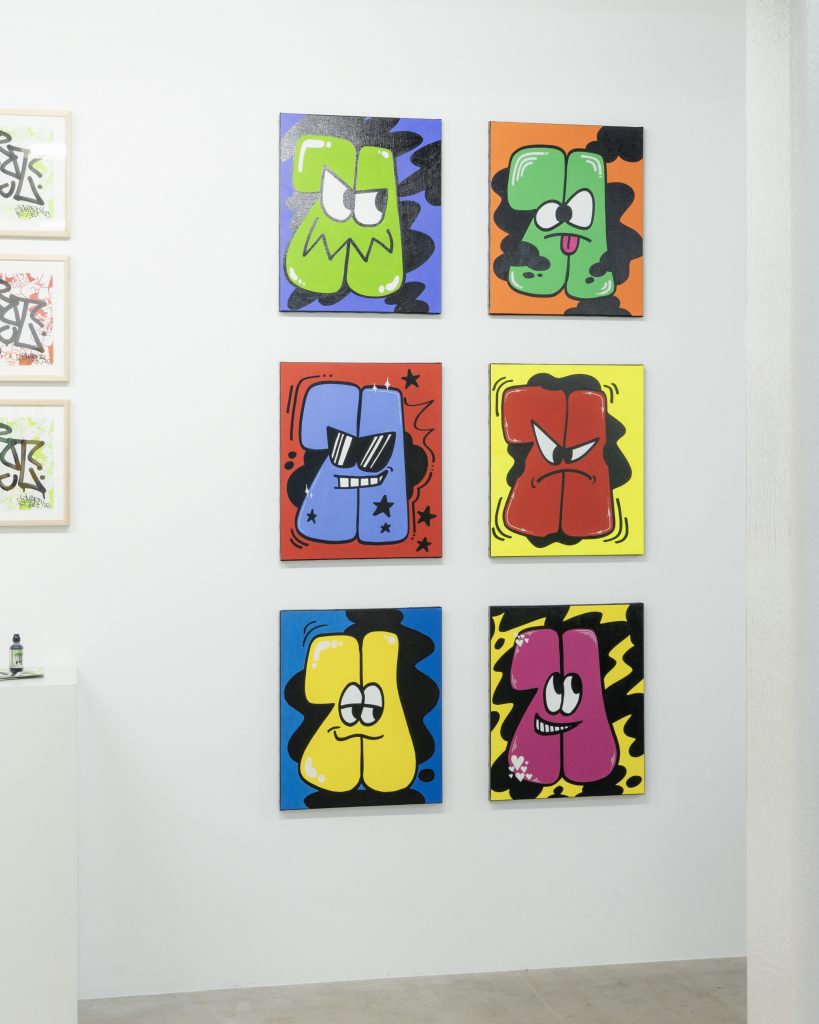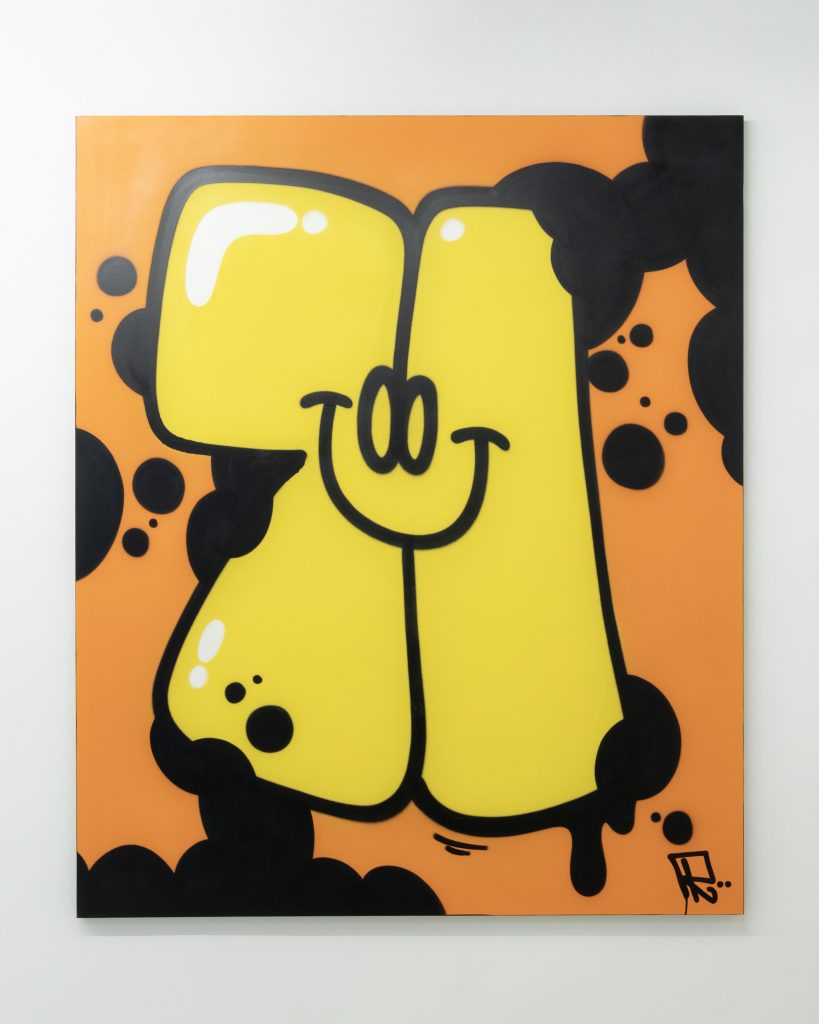
REMIO
Graffiti writer based in Paris. A HUF ambassador who receives support not only from the art scene but from the street fashion world as well. He has made his mark far and wide, working in the underground scene and around the world.
Instagram:@rrremio
The art exhibition held at THE PLUG on July 28th was a unique event that only HUF SET NFT holders could attend. As a HUF ambassador, REMIO was invited as the main guest. There, he exhibited his work, sold HUF collaboration items, and even painted live. We asked world-renowned graffiti artist REMIO about his fascination with graffiti and the artwork he creates.




People who see the art can think about it
That’s the fun of graffiti art

– You collaborated with HUF for this exhibition. Can you remind us what your relationship is with the brand?
REMIO: To me, HUF = Keith (Keith Hufnagel, HUF’s founder). I’ve worked with him for close to twenty years, including when I did my first Japanese project. When I hear HUF, I’m reminded of him. I was also thinking of him when working on the exhibited pieces for this event.
– Can you share an anecdote about you and Keith?
REMIO: I remember when he called me up out of the blue one day saying, “Hey, do you need a studio? I have some space left here if you want to use it”, and prepared a huge space in the HUF office for me. I’ve been doing the same thing, graffiti art, since I was eighteen, but Keith was the one who got me to where I am now. I don’t think I could be standing here, where people can evaluate my art like this, if I had never met him. He’s always looked after me and provided me with big opportunities.
– HUF SET is HUF’s first NFT event. How do you feel about NFTs?
REMIO: I think they’re genuinely interesting. I’ve done NFT projects and events with friends before. The possibilities that can be derived from NFTs are infinite.
– You also made NFT art for this event. Is there a difference between that art and the graffiti you usually create?
REMIO: No, what I make on the street and digitally are the same. Graffiti is the same wherever you choose to express it, whether it’s on a sticker, a canvas, on some sort of label, or an NFT. It doesn’t matter. Everything’s exactly the same.
– Then what is the appeal of graffiti art to you?
REMIO: When you see a “REMIO” tag on the street, you might think, “What is this?” I find it interesting that the people who see it then think about what “REMIO” is. One time, I overheard an older woman on the train who saw my tag talking on the phone saying, “I wonder what REMIO is?” (laughs). I like when things like that happen. When I’m tagging in town, I have to do it quickly in about three minutes before someone catches me. That tension is captured well in graffiti, which is another thing that’s appealing about the artform.






– I feel like your displayed works convey that well.
REMIO: I was able to work on the pieces you see in the exhibition for two days, which is much longer than usual! The “R” in my graffiti is unique, character-like, and usually immediately recognizable. But for this collaboration, I used HUF SET as a concept and created a character out of the letter “H” instead, drawing some variations of that. I drew the HUF SET graffiti on the canvas displayed in the entrance, but the “E” you see here is drawn with just two curves. This is partly due to the influence of single-stroke calligraphy, but these are also naturally occurring lines that have been ingrained in me from trying to draw quickly. I think this is also a reflection of graffiti culture.





– As you mentioned earlier, the cartoon-like character you drew in “H” is fun and impactful. It’s very characteristic of your style. How did this character come about?
REMIO: Other writers had already drawn characters in their work before. The reason I started incorporating it in my work was because I had drawn the “R” of my writer name, REMIO, like an icon. The bent bottom of the “R” had started to look like feet and a mouth, which is why I added eyes and sunglasses and began to draw it like a character. But what’s important is the bottom of the “R”, because you see it and immediately recognize it as my work. So when I collaborate with someone, I make it special by changing the top of the face.
– Where did you get the inspiration for this character’s facial expressions?
REMIO: I’ve liked Disney animation since I was a kid, and I also draw inspiration from the characters on the packaging of snacks and drinks sold at Japanese convenience stores. I’ve come to Japan over ten times now, but it’s fascinating because I discover something new every time.
– What are your roots in terms of drawing characters?
REMIO: I’m from Norway, so I think my roots are in the books that I had as a kid and in the characters on the Eastern European children’s cartoons I was allowed to watch once a week. With that as my background, I’ve been drawing ever since I was a child, which has led me to where I am today.
Constantly drawing something as if meditating

REMIO: I’ve always been close with the TOKYO ZOMBIE crew. Also with MINT, who helped me with this exhibition. There are many other Japanese graffiti artists who are successful abroad, and there are a lot of youth participating, so it feels like the scene is firmly rooted in the culture. I think Japanese graffiti, not just an imitation of other graffiti, exists on its own,
– Thank you. Lastly, please tell us about your future endeavors.
REMIO: I’m doing a pop-up event at Isetan in March of next year. I’m hoping to unveil the brand that I’m launching with my friends there. I might also work on a project with MINT, who I mentioned earlier. I’d like you to check that out. I’ve also been getting requests to exhibit my work outside of Tokyo recently, like in Yamaguchi prefecture, the Kyushu region, and all around Japan. It would be fun to do a pop-up tour kind of thing. I’m going to keep working in Japan, so I’ll see you around.
Photography Kohei Omachi(W)
Translation Mimiko Goldstein

